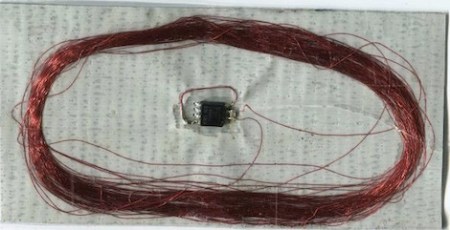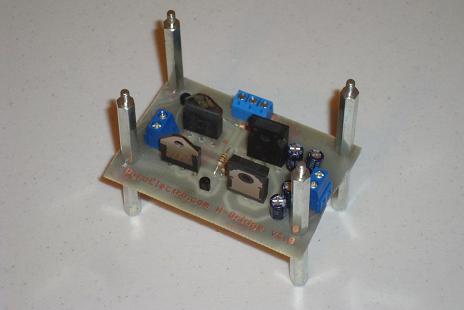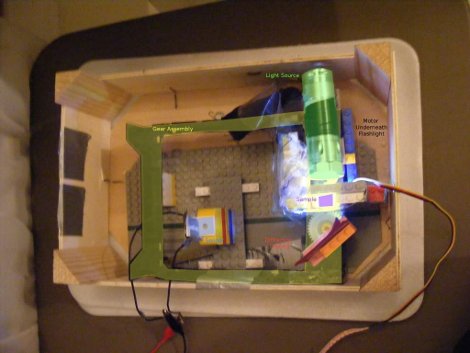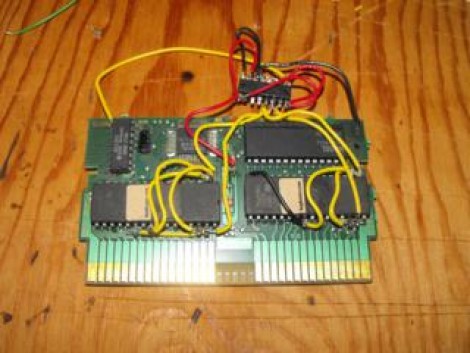
A few years ago, [Beth] came up with the idea of using an AVR as an RFID tag. She’s gotten sidetracked with a few other projects in the meantime but her idea has surfaced again, this time as a duct tape RFID tag. The build is just four components: 0.1 µF and 1 nF capacitors, an ATtiny85 microcontroller, and 100 turns of 40 AWG magnet wire, all soldered together and placed on a duct tape substrate.
Like most RFID tags, the power is drawn from the reader through the coil, but even in low power versions the ATtiny is only rated down to 1.8 Volts. Since the microcontroller is only getting about 1 Volt from the coil, the clock oscillator of the ATtiny won’t work. This isn’t a problem in this build, because the coil is connected to the the clock input – the 125 kHz coming off the reader provides the clock. Very clever.
Of course, the microcontroller is going to need some firmware to send some bits to the reader, so she used the AVRFID firmware (check out the comments in the source for a great walkthrough) to transmit under the HID protocol, itself a derivative of [Beth]’s earlier work with the EM4102 protocol.
Not only are we impressed with this hack, we’re amazed [Beth] is still perfecting her work more than two years after her first post on the subject. That’s dedication and unbridled cleverness.
Via adafruit

















